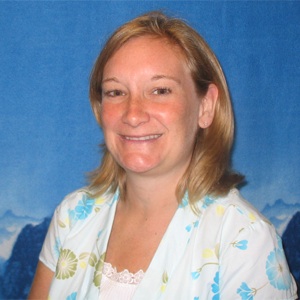Dr. Kelly Rohan discusses her SAD research, what cognitive therapy (CBT) for Seasonal Affective Disorder is like, and how to find a CBT therapist for winter depression.
In a 2009 study by Dr. Kelly Rohan, people who saw a cognitive therapist for Seasonal Affective Disorder had a significantly lower chance of a recurrence of major depression, and less severe depression symptoms the following winter, than those who received 10,000 lux light therapy alone

or light therapy in combination with CBT. Dr. Rohan corresponded with this author about seasonal depression treatment.
LD: I believe I read that yours was the first study to show that the long-term effects of CBT for SAD were better than 10,000 lux light therapy. Is this correct?
KR: “Yes. Ours was the first study to do a planned, prospective followup of SAD patients in the next winter season following any treatment.”
About Cognitive Therapy for Seasonal Depression
LD: Tell us about CBT for SAD, and how it is different from standard CBT.
KR: “Cognitive-behavioral therapy for SAD, specifically, involves learning proactive ways to cope with the winter season…The ‘cognitive’ part of CBT involves recognizing negative thoughts that are associated with low mood, evaluating how realistic those thoughts are, and changing them into less negative and more realistic thoughts…For SAD, some of these negative thoughts may be about the winter season, sunlight availability, and/or weather.
“The ‘behavioral’ part involves identifying enjoyable activities that boost mood and regularly scheduling those activities into everyday life. These ‘natural antidepressants’ might include social activities, hobbies, exercise, or anything that is fun for the individual.
“The logic behind CBT for SAD is this: If an individual with SAD starts thinking more positively and spending more time doing fun, engaging things in the winter as opposed to isolating, oversleeping, and hibernating, mood and other SAD symptoms should improve.”

LD: I’m wondering why you think the group that had CBT alone did better than the group that had a combination of CBT and light therapy.
KR: “I can only hypothesize about why solo CBT fared better than the combination of CBT plus light therapy in the next winter.
“Someone in combination treatment might reason, ‘I will give this CBT thing a half-hearted try next winter, but I always have the light box to fall back on.’ Someone treated only with CBT in the initial winter may have been more likely to keep practicing their CBT skills with gusto in the next winter because that is all they know how to do.”
Finding a Cognitive Therapist for Seasonal Affective Disorder (SAD)
LD: Should people who have winter depression seek CBT that is specifically designed for SAD or can any CBT therapist help?
KR: “CBT for SAD is probably best, given that there are data on the treatment’s efficacy. CBT for SAD is the only evidence-based psychotherapy treatment for SAD to date. However, CBT for SAD
is not widely disseminated yet. In the meantime, until more practitioners become experienced in delivering CBT for SAD specifically, a good, garden-variety CBT therapist who is competent in administering CBT for nonseasonal depression would probably be the next-best thing.”
LD: Any advice on finding an appropriate therapist?
KR: The Academy of Cognitive Therapy maintains a website where you can find a certified cognitive therapist by geographic region.
Dr. Rohan’s recent study showed a strong, statistically significant finding that those who seek cognitive-behavioral therapy instead of light treatment for SAD have a lower rate of recurrence of major depression and less severe depression symptoms in the following winter.
Even those who had CBT in combination with light therapy did not fare as well as those who had CBT only, as far as the severity of their symptoms the following winter. It is best to find a therapist trained specifically in CBT for SAD, but if none are available, a good CBT therapist should help.
Click to read Part One of the interview with Dr. Kelly Rohan. Click to read Part Three.
©Lisa C. DeLuca, all rights reserved. It is a violation of copyright law to reproduce this work on the web or for business use without permission from the author. This article was originally published on the web on December 21, 2009. Please contact the author with your reprint request.
This article is for general information only and is not a substitute for personal medical or mental health advice. If you are experiencing troubling symptoms please seek the advice of a medical or mental health professional in person.
